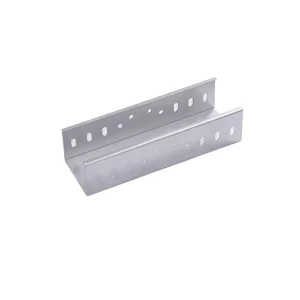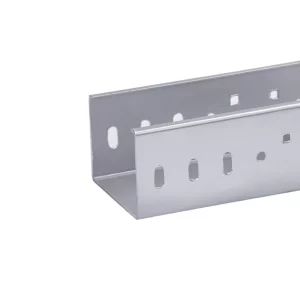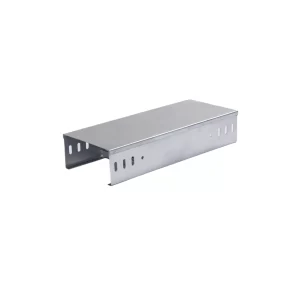Cable trays are essential components in modern electrical installations, providing a structured pathway for routing cables and wires safely and efficiently. The choice of material for cable trays significantly impacts their durability, performance, and cost-effectiveness. Several materials are commonly used, each with its own advantages and limitations. In determining the ‘best’ material, factors such as the environment where the cable tray will be installed, load-bearing requirements, corrosion resistance, and cost must be considered. Here’s an overview of the most popular materials used for cable trays:

1. Galvanized Steel
Overview: Galvanized steel cable trays are among the most widely used due to their strength, durability, and cost-effectiveness. They consist of steel that has been coated with a layer of zinc to protect against corrosion.
Advantages:
Strength: Steel provides excellent load-bearing capabilities, making it suitable for heavy cable loads.
Cost-Effective: Compared to other materials, galvanized steel offers a good balance between price and performance.
Corrosion Resistance: The zinc coating protects the underlying steel from rust, extending the lifespan of the tray, especially in indoor environments.
Disadvantages:
Limited Outdoor Use: While zinc coating resists corrosion, in highly corrosive outdoor environments or areas with salt exposure, galvanized steel may corrode over time.
Weight: Steel cable trays are heavier than aluminum or fiberglass alternatives, which can affect handling and installation costs.
2. Aluminum
Overview: Aluminum cable trays are a lightweight alternative to steel, known for their corrosion resistance and ease of installation.
Advantages:
Corrosion Resistance: Naturally resistant to rust and corrosion, aluminum is ideal for both indoor and outdoor applications, especially in coastal or corrosive environments.
Lightweight: Easier to handle and install than steel trays, reducing labor costs and time.
Non-Magnetic: Suitable for installations near sensitive electronic equipment.
Disadvantages:
Lower Load Capacity: Compared to steel, aluminum has a lower load-bearing capability, limiting its use in heavy-duty applications.
Higher Cost: Generally more expensive than galvanized steel, though this can be offset by reduced installation costs.


3. Stainless Steel
Overview: Stainless steel cable trays offer superior corrosion resistance and durability, often used in harsh environments or where aesthetics are a concern.
Advantages:
Superior Corrosion Resistance: Resistant to a wide range of corrosive substances, including chloride (salt), making it ideal for marine environments and chemical plants.
Aesthetics: Provides a sleek, modern look suitable for visible installations.
Strength and Durability: Offers high load-bearing capacity and longevity.
Disadvantages:
High Cost: The most expensive option among common cable tray materials.
Heavy: Can be more challenging to handle and install due to its weight.
4. Fiberglass Reinforced Plastic (FRP)
Overview: FRP cable trays are a composite material made from a polymer matrix reinforced with glass fibers. They offer excellent corrosion resistance and non-conductivity.
Advantages:
Excellent Corrosion Resistance: Virtually immune to rust and chemical corrosion, making them ideal for highly corrosive environments.
Non-Conductive: Safe for use around electrical cables without risk of short circuits or interference.
Lightweight: Easy to install and handle, reducing labor costs.
Disadvantages:
Load Capacity: Lower load-bearing capacity compared to metal options, restricting use in heavy cable loading situations.
Potential for UV Degradation: If not UV-stabilized, prolonged exposure to sunlight can degrade the material.


Choosing the Best Material
The ‘best’ material for cable trays depends on the specific application’s requirements. For instance, if the cable tray is to be installed in a coastal area or a chemical plant, stainless steel or FRP might be preferred due to their superior corrosion resistance. In indoor applications with moderate cable loads, galvanized steel would offer a cost-effective solution. Aluminum is an excellent choice when weight reduction and easy installation are priorities.
It’s crucial to conduct a thorough assessment of the installation environment, load requirements, and budget before selecting the most appropriate cable tray material. Additionally, considering future maintenance and potential environmental changes can help ensure a long-lasting and effective cable management system.

